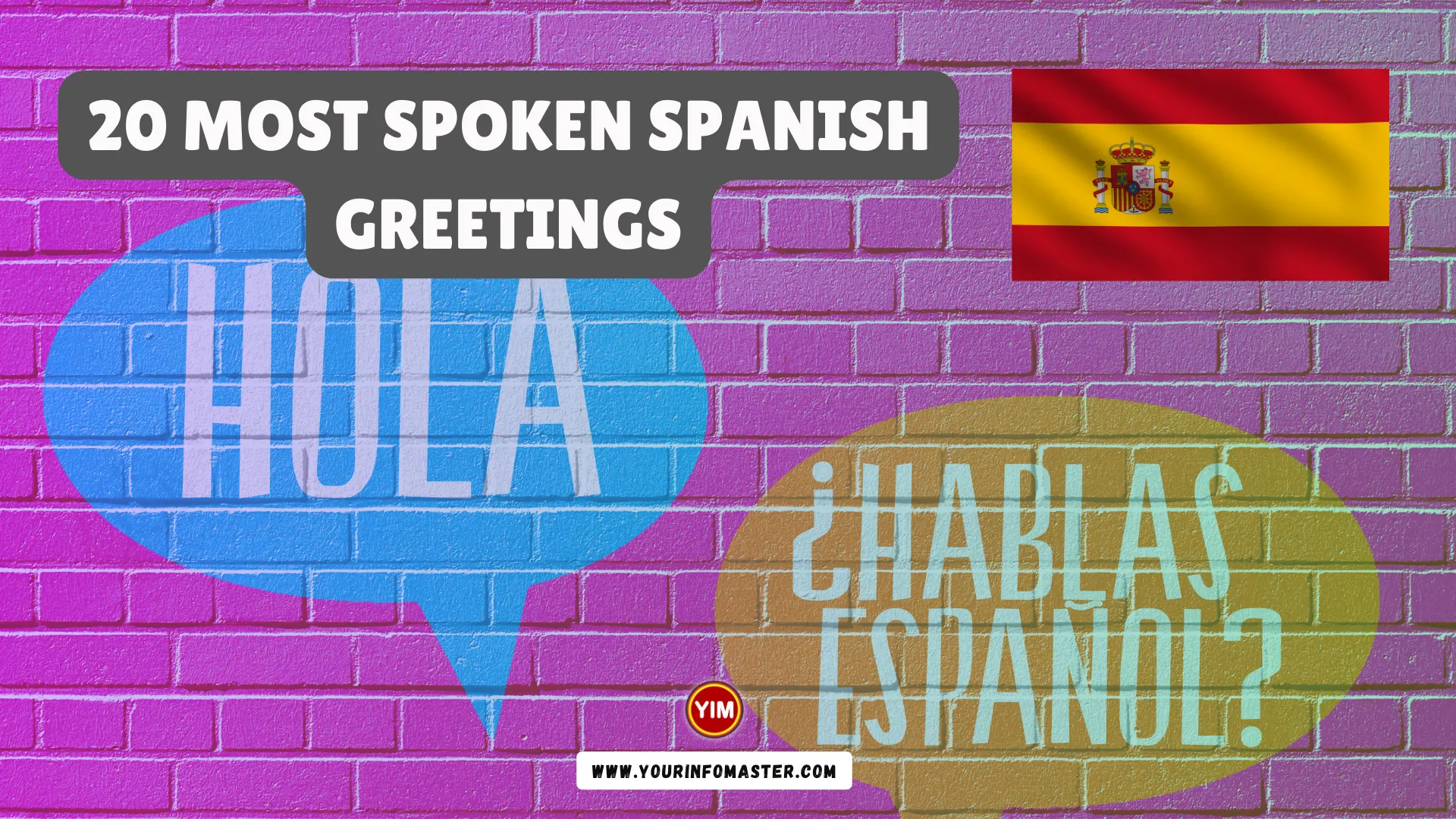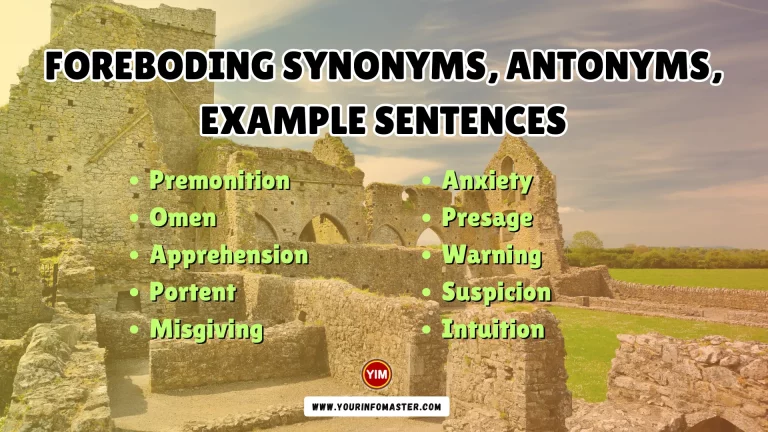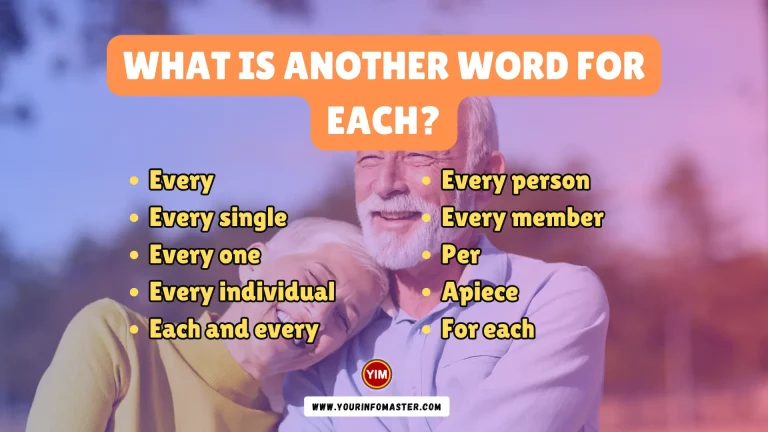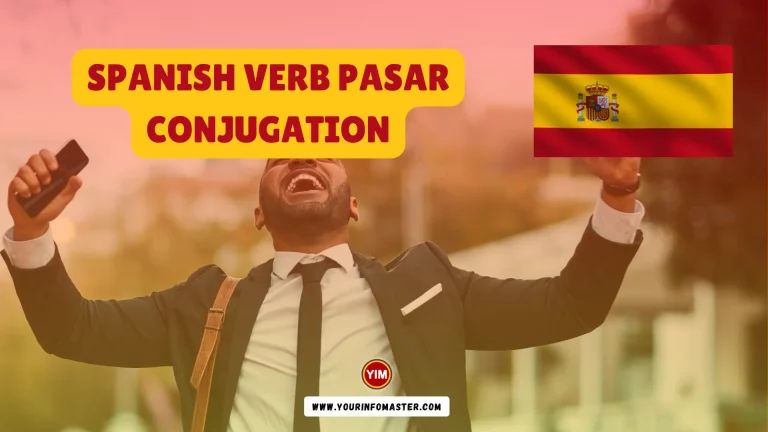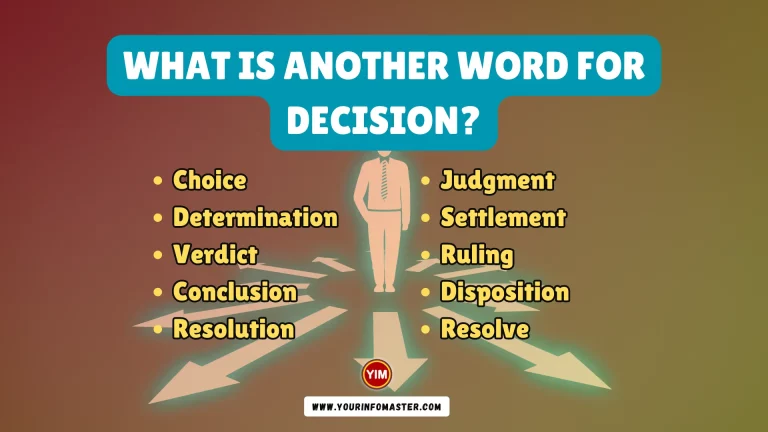Spanish Greetings can go a long way in establishing connections with Spanish speakers. One simple yet powerful phrase, “¿Cómo estás?” meaning “How are you?” in English, can serve as a versatile icebreaker when engaging with familiar faces.
Pronounced as “KOH-moh ess-TAHSS,” this expression holds the potential to warmly greet individuals across Spain or many Latin American countries.
To further enhance your interactions, equip yourself with a collection of essential phrases listed below. Armed with these words, you’ll find yourself in an excellent position to leave a positive first impression during your travels in Spanish-speaking regions.
So, whether it’s “¡Hola!” or “¿Habla inglés?” these greetings and conversational cues will surely open doors to delightful conversations and smoother interactions.
Check also: Spanish Strong Vowels and Weak Vowels
Main Points: Why should we learn Spanish Greetings
Cultural Awareness: Learning Spanish greetings allows us to understand and appreciate the cultural norms and practices of Spanish-speaking regions. Greetings play a vital role in daily interactions, and being familiar with them shows respect for local customs.
Building Connections: Knowing Spanish greetings helps establish connections with native speakers. Greeting someone in their language fosters a friendly and approachable atmosphere, making conversations more enjoyable and meaningful.
First Impressions: Proper greetings are crucial for creating positive first impressions. When traveling or meeting Spanish speakers, using the appropriate greeting demonstrates courtesy and openness.
Language Proficiency: Mastering greetings is a stepping stone to improving overall Spanish language proficiency. It allows learners to practice pronunciation, vocabulary, and basic grammar structures.
Navigating Social Situations: Understanding greetings helps in various social situations, from formal encounters to casual conversations, making it easier to engage with locals and make friends.
Enhanced Travel Experience: When traveling to Spanish-speaking countries, knowing greetings enhances the overall travel experience. Locals appreciate the effort, which can lead to more authentic interactions and cultural insights.
Business and Professional Interactions: In a professional context, using appropriate greetings displays professionalism and cultural awareness. It can lead to more effective communication and better relationships in the business world.
Common Courtesy: Learning greetings is a sign of common courtesy. When interacting with Spanish speakers, using greetings shows that you value their language and culture.
Inclusivity and Respect: Embracing Spanish greetings promotes inclusivity and respect for diverse cultures and languages. It fosters a sense of unity and understanding among people from different linguistic backgrounds.
Learning Foundation: Greetings serve as a foundation for further language learning. Once learners grasp the basics, they become more motivated to explore and expand their Spanish language skills.
Most Spoken Spanish Greetings
1. ¡Hola! (Hello!)
- Translation: A simple and common greeting that translates to “Hello” in English.
- Usage: This is a standard and friendly way to say “Hello” to someone, similar to how it is used in English.
2. Buenos días (Good morning)
- Translation: Literally means “Good days” and is used to greet someone in the morning.
- Usage: It is a polite way to say “Good morning” and is commonly used until midday.
3. Buenas tardes (Good afternoon)
- Translation: Translates to “Good afternoons” and is used to greet someone in the afternoon.
- Usage: It is a polite way to say “Good afternoon” and is generally used from midday until evening.
4. Buenas noches (Good evening / Good night)
- Translation: Means “Good nights” and is used to greet someone in the evening or at night.
- Usage: It can be used to say “Good evening” when meeting someone in the evening, or “Good night” when parting ways at night.
5. ¿Qué tal? (How are you?) [Informal]
- Translation: A casual way of asking “How are you?” in English.
- Usage: It is used among friends, family, or in informal settings to inquire about someone’s well-being.
6. ¿Cómo está usted? (How are you?) [Formal]
- Translation: A more formal way of asking “How are you?” used when addressing someone with respect.
- Usage: It is appropriate to use in professional settings or when speaking to someone you don’t know well.
7. Bien, gracias (Good, thank you)
- Translation: A response meaning “Good, thank you.”
- Usage: It is a common reply to the question “How are you?” when you are doing well.
8. ¿Y usted? (And you?) [Formal]
- Translation: A formal way of asking “And you?” when responding to “How are you?”
- Usage: It is used to show politeness and continue the conversation after someone asks how you are doing.
9. ¿Y tú? (And you?) [Informal]
- Translation: An informal way of asking “And you?” in response to “How are you?”
- Usage: It is used among friends or in casual settings to continue the conversation about each other’s well-being.
10. Mucho gusto (Nice to meet you)
- Translation: Translates to “Much pleasure” and is used to express pleasure in meeting someone new.
- Usage: It is a polite way to say “Nice to meet you” when you are introduced to someone for the first time.
11. Encantado(a) / Gusto en conocerte (Pleased to meet you)
- Translation: “Encantado” is used by men, “encantada” by women, and “gusto en conocerte” means “pleasure in meeting you.”
- Usage: These phrases are polite ways to express delight when meeting someone for the first time.
12. ¿Cómo te va? (How’s it going?) [Informal]
- Translation: An informal way to ask “How’s it going?” or “How are things?”
- Usage: This phrase is commonly used among friends and acquaintances to inquire about someone’s general well-being.
13. ¿Cómo le va? (How’s it going?) [Formal]
- Translation: A formal way to ask “How’s it going?” used when addressing someone with respect.
- Usage: This expression is suitable for formal situations or when speaking to someone you don’t know well.
14. ¿Qué pasa? (What’s up?)
- Translation: An informal way of asking “What’s up?” or “What’s happening?”
- Usage: This is a casual greeting often used among friends to inquire about the latest news or events.
15. ¿Qué hay de nuevo? (What’s new?)
- Translation: Literally means “What’s new?”
- Usage: This phrase is used to ask someone about any recent developments or updates in their life.
16. Saludos (Greetings)
- Translation: Translates to “Greetings” or “Regards.”
- Usage: This is a friendly and general way to greet someone, often used in written communication.
17. ¡Feliz día! (Have a nice day!)
- Translation: Means “Happy day!”
- Usage: This expression is a cheerful way to wish someone a pleasant day ahead.
18. ¿Cómo andas? (How are you?) [Informal]
- Translation: A colloquial way of asking “How are you?” or “How’s it going?”
- Usage: This phrase is commonly used in informal settings among friends or peers.
19. ¿Qué tal todo? (How’s everything?)
- Translation: Means “How’s everything?” or “How are things going?”
- Usage: This is a friendly and relaxed way to inquire about someone’s overall well-being and life situation.
20. Que tengas un buen día / noche (Have a good day / night)
- Translation: Means “Have a good day” or “Have a good night.”
- Usage: These phrases are warm and considerate ways to bid someone a positive farewell for the day or night.
Check also: Spanish Verb Escribir Conjugation, Meaning, Translation, Examples
Conclusion
Spanish greetings play a significant role in fostering cultural understanding, building connections, and making positive first impressions. Whether for travel, business interactions, or simply showing respect, mastering these greetings enriches language proficiency and enhances cross-cultural communication.
If you really enjoyed the article about “Spanish Greetings,” then I would be very grateful if you’d help it spread by emailing it to your friends or sharing it on Twitter, Instagram, or Facebook. Thank you!
Have you read “Spanish Greetings?” Which of these blogs are you reading, and how is it similar to one of them?
Read More
- Spanish Verb Esperar Conjugation, Meaning, Translation, Examples
- Spanish Verb Dejar Conjugation, Meaning, Translation, Examples
- Spanish Verb Llamar Conjugation, Meaning, Translation, Examples
- Spanish Verb Pasar Conjugation, Meaning, Translation, Examples
- Spanish Verb Morir Conjugation, Meaning, Translation, Examples
- Spanish Verb Trabajar Conjugation, Meaning, Translation, Examples
- Spanish Verb Deber Conjugation, Meaning, Translation, Examples
- Spanish Verb Creer Conjugation, Meaning, Translation, Examples
- Spanish Verb Sentir Conjugation, Meaning, Translation, Examples
- Spanish Verb Estudiar Conjugation, Meaning, Translation, Examples

